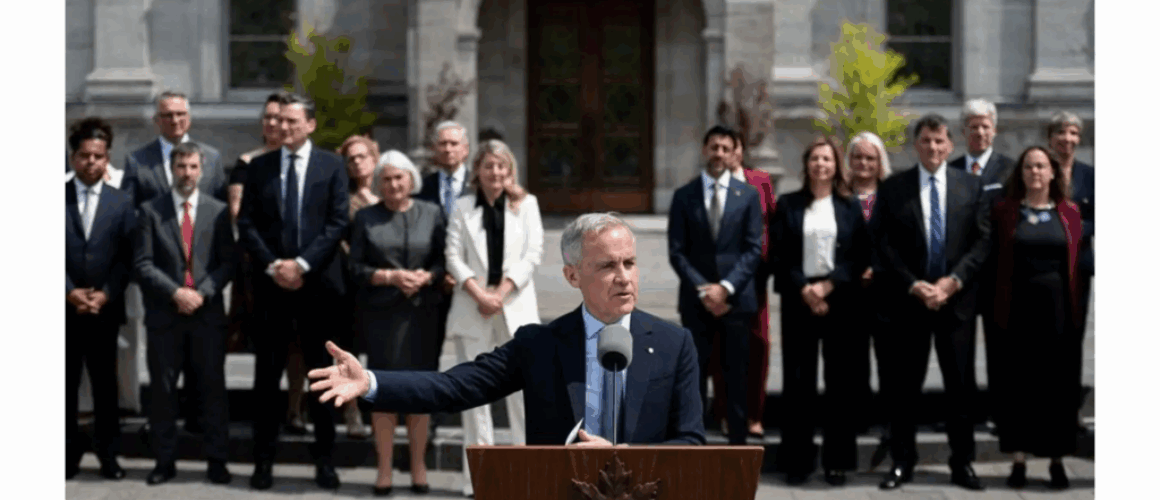Under the Surface – Liberal Backbenchers Quietly Push for a Western Realignment

While Prime Minister Mark Carney continues to enjoy strong national approval ratings and an emboldened mandate, murmurs from within his own caucus suggest a more complicated picture — especially west of the Ontario-Manitoba border. A growing number of Liberal MPs, primarily representing ridings in Alberta, Saskatchewan, and interior British Columbia, are becoming increasingly vocal about what they view as a disconnect between Ottawa’s priorities and the economic, social, and environmental needs of their constituents.
Their concerns, though not yet publicized in the national media, were laid bare in a series of closed-door meetings held in early May. The most significant of these took place in Edmonton, where five sitting Liberal MPs and two provincial counterparts met to discuss forming what they tentatively called the Western Liberal Caucus — a bloc within the party aimed at influencing policy direction from the inside.
What Are They Asking For?
The discontent is not about ideology, but geography. Western Liberal MPs are not calling for a rightward shift — rather, they are demanding a more regionally responsive Liberalism, one that recognizes the unique realities of resource-based economies, Indigenous land dynamics, and rural infrastructure deficits.
Among the key issues raised:
-
Energy Corridor Development: MPs want the federal government to revisit interprovincial pipeline and utility corridor proposals, ensuring that environmental review processes don’t become indefinite roadblocks to economic development.
-
Agricultural Support Reforms: Prairie MPs argue that current federal subsidy models are disproportionately geared toward large-scale agribusiness, neglecting mid-size and family-run farms which form the backbone of rural economies.
-
Decentralized Environmental Regulation: Several MPs are proposing a system where provinces can co-design their own emissions reduction frameworks, within federal benchmarks, to allow for more practical implementation.
In short, they are pushing for a federalism that functions, not just in theory but in budget, law, and execution.
The Carney Balancing Act
For Prime Minister Carney, a Western realignment within his party presents both a challenge and an opportunity. Known for his globalist resume and climate-first policy agenda, Carney now faces the task of anchoring those ideals in regions that are still economically reliant on oil, mining, and agriculture.
Sources within the Prime Minister’s Office (PMO) confirm that Carney is considering a “regional legislative appendix” system — where omnibus federal bills would include specific Western economic clauses or implementation pathways. This would be a first in Canadian legislative design, signaling a more modular, regionalized approach to federal governance.
The PMO is also quietly investing in a Western policy think tank, based in Calgary, that would report directly to the Privy Council Office. Its mandate: to serve as a policy incubator for sustainable development in carbon-heavy provinces — a move that could appease both progressives and pragmatists.
Risks of Rebellion — or Reform?
Historically, when Liberal governments ignore Western grumblings, the consequences have been electoral collapse. The Reform Party was born out of that very dynamic in the 1990s. While today’s Liberal Party is far more inclusive and ideologically diverse, the political risk remains if Carney is seen as governing “from Toronto for Toronto.”
But there are key differences this time.
This group of backbenchers is not threatening to defect — they are organizing to influence, not abandon. In interviews with CanadaBrief (off-record), MPs expressed deep loyalty to Carney as a leader but frustration that national policy does not always translate into local outcomes. They want the party to succeed — but on Western terms as well.
For now, their strategy is internal leverage: collaborating on draft amendments, lobbying cabinet ministers regionally, and coordinating press releases to create pressure without confrontation.
A New Model for National Cohesion?
If handled strategically, this internal realignment could become a model for national cohesion. By allowing greater regional input without fracturing federal standards, Carney’s government could usher in a new form of “asymmetric Liberalism” — one that respects the differences of region while holding together the unity of nation.
In a political environment often polarized between East and West, climate and economy, elite and grassroots — the emergence of the Western Liberal Caucus may just be a long-overdue recalibration of power. The question is whether it signals future division — or future design.